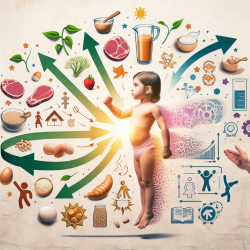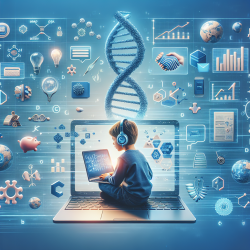Introduction
As practitioners dedicated to enhancing child development, it's crucial to understand the intricate interplay between energy, dietary proteins, and amino acid composition. Recent research emphasizes the dynamic relationship between these elements and their collective role in maintaining cellular homeostasis. This understanding can significantly impact fields such as nutrition, metabolism, and educational outcomes.
The Interplay of Energy and Protein Synthesis
Energy metabolism and protein synthesis are deeply interconnected processes. Cells require energy in the form of adenosine triphosphate (ATP) to perform essential functions like molecule synthesis and movement. This energy is primarily derived from the catabolism of macronutrients, including carbohydrates, lipids, and proteins.
Protein synthesis, an energy-intensive process, is vital for sustaining life and facilitating growth. It requires a sufficient supply of amino acids (AAs), particularly essential amino acids (EAAs), which must be regularly replenished through diet. The synthesis of proteins is regulated by intricate metabolic mechanisms, ensuring that energy production and protein synthesis meet cellular demands.
Practical Applications for Practitioners
Understanding the dynamic interplay between energy and protein synthesis can guide practitioners in developing strategies to optimize child development. Here are some practical applications:
- Dietary Recommendations: Ensure children receive a balanced diet rich in high-quality proteins, providing all essential amino acids. This supports optimal growth and cognitive development.
- Energy Management: Encourage regular physical activity to enhance energy metabolism and protein synthesis. Physical activity increases the body's ability to synthesize proteins, supporting muscle growth and overall health.
- Supplementation: Consider EAA supplementation for children with dietary restrictions or increased metabolic demands. This can support protein synthesis and energy production, promoting healthy development.
Encouraging Further Research
While current research provides valuable insights, further studies are needed to explore the complex interactions between energy metabolism, protein synthesis, and child development. Practitioners are encouraged to stay informed about emerging research and incorporate new findings into their practice.
Conclusion
The dynamic interplay between energy, dietary proteins, and amino acids is fundamental to child development. By understanding these processes, practitioners can develop strategies to optimize educational outcomes and support healthy growth. For a deeper dive into the research, practitioners can access the original research paper titled Importance of Energy, Dietary Protein Sources, and Amino Acid Composition in the Regulation of Metabolism: An Indissoluble Dynamic Combination for Life.










